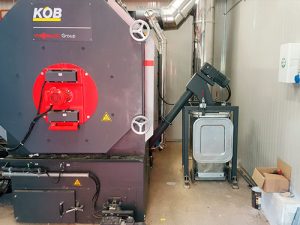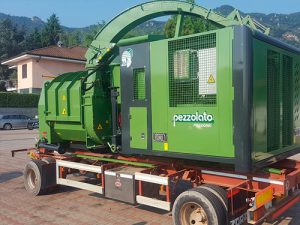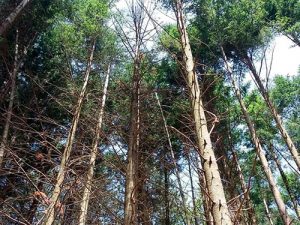The Società Cooperativa Agricola Eco-Energie, located in in the south of Tuscany, Italy , was established in order to protect the forestry landscape; to develop an activity in the field of the green economy; and to create new employ- ment opportunities for the local population. The mission of the cooperative is to increase the cultivation of forestry, in an innovative way. The innovative topic of this cooperation experience is the production of local certified fuel from wood and the management of the whole supply chain, selling energy to the final consumers and, thereby, creating add value from wood and involving the local population in the maintenance of the landscape.
Basic information
The main threat to mountainous areas and forestry land is the relatively low commodity prices offered for lumber / timber on global markets in comparison to the costs of planting, maintaining and logging. In order to combat this challenge, ECOENERGIE have engaged, thanks to the cooperation, in the:
- Production and sale of , traditional wood products including firewood and wooden poles;
- Engagement in public procurement activities, especially in land maintenance (civil engineering works, green management, cleaning of river banks)
- Management of heating plants. The cooperative manages a heating network and provides energy to a village and it has the capacity to heat a volume of 40.000 cubic meters.
The cooperative is also involved as a partner in a number of projects funded through the Rural Development Pro- gramme within the Tuscany region.
The main learning element emerged from this experience of cooperation, concerns the concept of multifunctionality as a way to reach a competitiveness, utilizing together human resources, competences, machinery of a group of farmers, working in a local very difficult context. The cooperation between farmers was essential in order to avail of the opportunities offered in the territory. The cooperative is managed by 9 farmers and it employs 36 staff. The average annual income of the cooperative is €2,500,000.
The main skills required for establishing this form of cooperation concerns ascertaining knowledge about
- The cooperation system in agriculture, in terms of advantages/critical points of different forms of collaboration and cooperation between farmers, suggesting different solutions based on the real experiences of farmers different aggregation forms.
- Management: rules, administrative management, accountability.
The management of the large range of activities undertaken by ECOENERGIE, requires the hiring of personnel / staff from different sectors. These include:
- Forestry (knowledge about forestry management and health &safety)
- Wood energy chain (wood fuels, management of heating plants)
- Public works: (civil engineering, use of earth moving machines)
The main benefits for farmers participating in this type of cooperation include: valorize their products - transforming wood into products with higher added value; and utilizing their skills in heritage management for the benefit of the local community. This includes developing a sustainable way to cultivate forestry, soil protection and support and maintaining the landscape. The local production of energy from wood represent an economic activity strongly linked with common benefits for local community and reflects the cultural and heritage of the region.
The critical difficulty is to obtain a sustainable income from wood products, especially in a relatively poor territory.
Possible advantages and disadvantages are:
Advantages:
- The Cooperation in this sector is an answer to the needs of economic development of forestry and connected activities. The Cooperative model form allows the group to manage a large surface of forestry, optimizing the use of machinery and local resources.
- The Cooperative Model allows the organization to manage a wide range of activities, increasing the income poten- tiality for farmers.
Disadvantages:
- This form of cooperation needs a very strong levels of management skills.
- Costs management is critical and as the add value is not high cash flow can be problematic. This in particular applies to the most innovative activities (energy selling, activities commissioned by local administration
Advice/Recommendation
The main points outlined in the interview by Simone Baglioni, President of ECOENERGIE include:
“The green economy and multifunctionality (Food production, renewable energies, forestry and tourism) represent the future of rural areas.”
“To avoid the risk of abandonment of forests and mountain areas, and the consequences in terms of destruction of territorial failure, the Government and public administration could encourage and support forestry cooperation.”
Queries/Questions
- In what ways can co-operation in forestry activities be supported in your locality / region? In what ways can the forestry sector work in unison with other actors / stakeholders in promoting the green economy?



 Čeština
Čeština  English
English  Français
Français  Deutsch
Deutsch  Italiano
Italiano  Slovenščina
Slovenščina  Español
Español 



